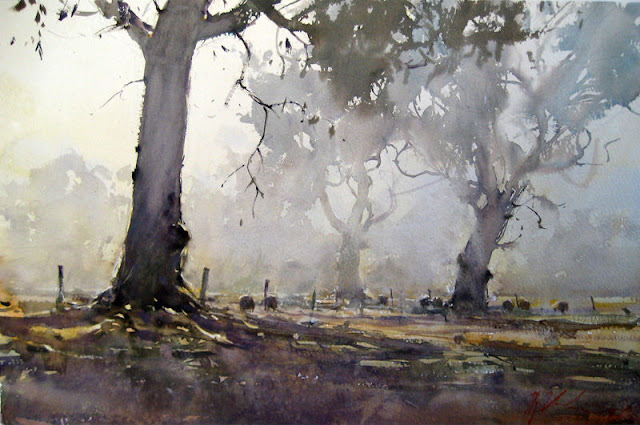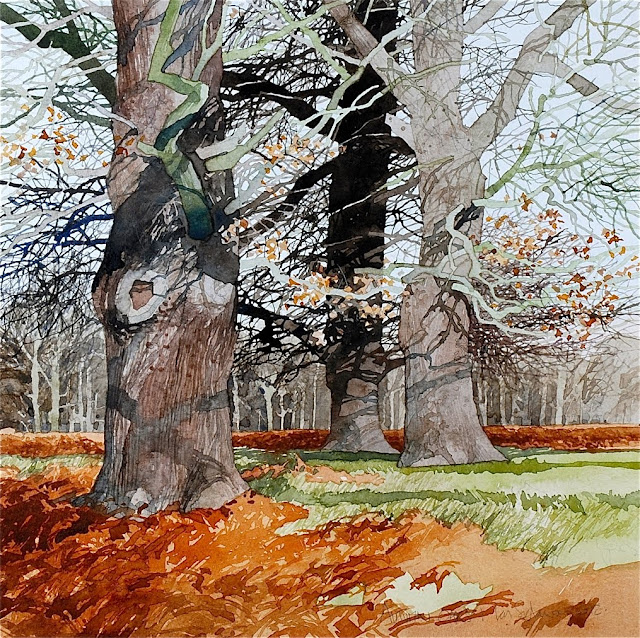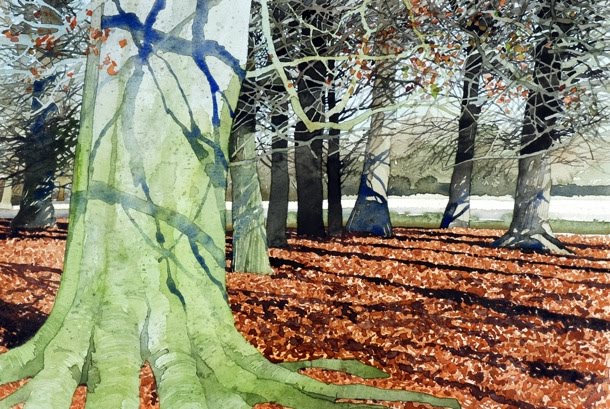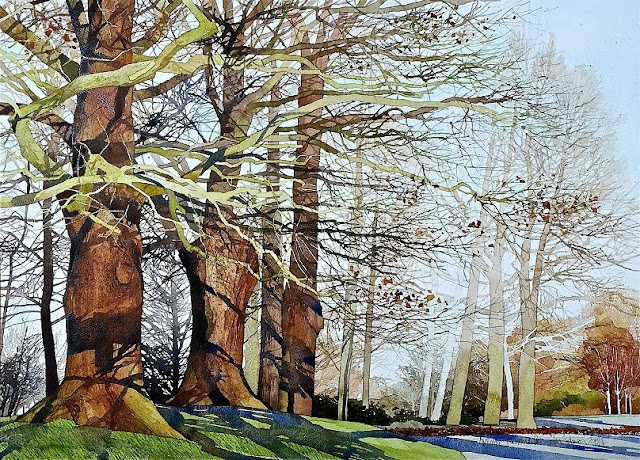25th of april BEGINNER WATERCOLOUR CLASS EXERCISES
The first week's watercolour class for beginners started with a pigment to water ratio series of blobs, ranging from pale to intense ( bright and in this case dark ), in equal increments, the object of this exercise is to know how much pigment to use in relation to water to get the desired intensity onto the paper, it's not always easy to get the ratio correct, see the painting of the dog below, the colours in this painting are intense ( bright )
The colours in this painting below are mostly pale neutral, and would require less pigment on the brush.
The first video is a demonstration of pigment to water ratio blobs.
Remember, the sequence goes like this, water pigment palette paper, then pigment palette paper, unlkess you need to add a little more water to keep your blobs streak free, and always mix your pigment in a small area and separately in the palette each time, this is to avoid picking up more water from a previous mix, and always mix your colours in a small area so you are not depositing more pigment on the palette than necessary. If your pigment are fresh from the tube they will be wet, so you must add tiny amounts to build up the intensity ( brightness gradually with each blob, if you have a blob that has gone too dark / intense too quickly, then clean your brush out, dry it a little on some kitchen roll, and manoeuvre your brush over the blob to lift out the excess pigment and start again.
The next exercise was to paint a colour wheel,
The value of painting a colour wheel is firstly to consolidate what you know about pigment to water ratio, as I want you to paint all the 12 segments at medium intensity, and practice your application to avoid streaks, ( see a previous video on wash application ) but also this will teach you about colour mixing, so you can understand what colours are intense ( bright ) and what colours are neutral ( dull )see above. This colour wheel was designed by artists to help you understand which colours look good together, have another look at the painting of the dog, these colours are pleasing to the eye because they have been chosen carefully, the colour wheel can help you to achieve this, but again, more on that later.
So, start by drawing a circle and dividing into 12 segments, this is made easier if you draw a cross through the centre, and draw a V shape inside each quarter, so that you have 3 segments in each quarter, please write the terminology next to each segment, where it says primary, secondary and tertiary, primary colours are unmixed with other colours, so we will use cadmium red, cadmium yellow, and ultramarine blue, start by painting in primary red, remember pigment palette paper, so we can see how intense the colour is in the palette before applying to the paper, clean your brush out and paint in your primary yellow, don't wash this yellow off your brush, but use it to pick up some of the red pigment in your palette to create an orange in the secondary segment, you are aiming at creating an orange that looks exactly half way between the red and the yellow, don't clean your brush out, use the orange on your brush to paint in the tertiary sections next to the red and yellow, you are aiming at creating a red orange, and a yellow orange, again, try to make them look half way between their neighbours, do this by eye on your painting, and don't try to duplicate the colours on the image below.
Repeat this exercise creating greens and violets, however, you will find that using a combination of cadmium red and ultramarine will result in burgundy rather than the violet colours you see below.
( if you want violets you must use a crimson, or pink pigment instead of Cad red )
Angliato see a video demonstration of how to paint a colour wheel, click on this link it is on Facebook watercolour classes in East





















































